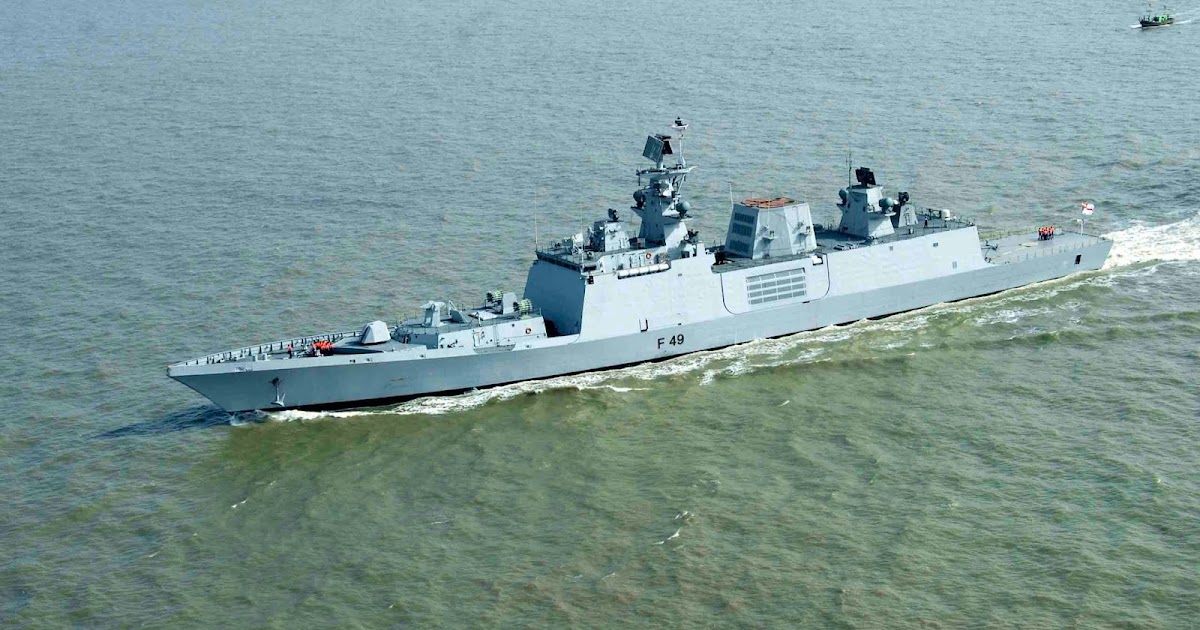
INS Sahyadri (F49) is a
By Vikas Gupta
Defence News of India, 24th Feb 24
Defence Minister Rajnath Singh, speaking at a media seminar on defence production on Saturday, laid down an annual target of Rs 3,00,000 crore ( in aerospace and defence services and production by 2028-29.
The annual exports target for aerospace and defence services and production was also raised ambitiously to Rs 50,000 crore in the same time-frame.
“Efforts towards jointness and integration have made our military ready to deal with every challenge together,” said the defence minister. “The government is focusing on long-term gains and not short-term outcomes to make India ‘Viksit Bharat’ (Developed India) by 2047”.
“The aim is to manufacture high-end systems like aero-engines and gas turbines in India in the next five years,” he said.
Over the preceding years, indigenous defence production growth has been based on a 2018 ministry of defence (MoD) roadmap titled the Defence Production Policy of 2018, or DPrP 2018.
The 2018 policy set out an annual target of Rs 1,70,000 crore (then $26 billion) in aerospace and defence services and production turnover by 2025. This would be achieved through additional investment of nearly Rs 70,000 crores (then $ 10 billion), creating employment for nearly 2 to 3 million people.
The 2018 policy also targeted exports of defence goods and services worth Rs 35,000 crores ($5 billion) by 2025.
Rajnath said no military could protect its nation with imported weaponry. He said the “government’s persistent efforts” towards self-reliance have increased defence production to Rs one lakh crore.
“Earlier, India was known to be an arms importer. But today, under the leadership of the Prime Minister, we have come out of our comfort zone and found a place in the list of top-25 arms exporter nations. Seven-eight years ago, defence exports did not even touch Rs 1,000 crore. Today, it has touched Rs 16,000 crore. By 2028-29, annual defence production is expected to touch Rs three lakh crore and defence exports Rs 50,000 crore,” said Rajnath.
The defence minister said that capital acquisition worth more than Rs 4,35,000 crore have been given in-principle approval till now in FY 2023-24.
DPrP 2018 set out the objective of creating “a dynamic, robust and competitive defence and aerospace industry as an important part of the ‘Make in India’ initiative.”
This was to be achieved by creating a tiered defence industrial ecosystem in the country that would achieve self-reliance by 2025 in the development and manufacture of fighter aircraft, medium lift attack and utility helicopters, warships, land combat vehicles, missile and gun systems, small arms, ammunition and explosives, surveillance systems, electronic warfare (EW) and communications systems, night fighting enablers, submarines, unmanned aerial vehicles (UAVs) and training systems such as simulators.
The 2018 policy also set out the goal of making India a global leader in cyberspace and artificial intelligence technologies.
Rajnath Singh said the government has been focusing on the integration of the Indian Army, Indian Navy and the Indian Air Force. “Earlier, the three services used to work in silos… It was a little difficult in the beginning; but today our military is ready with better coordination to deal with every challenge together,” he said.
He also listed out decisions taken towards long-term gains in other sectors, including the successful implementation of goods and services tax (GST), initiatives in health and education sectors, and banking reforms.






